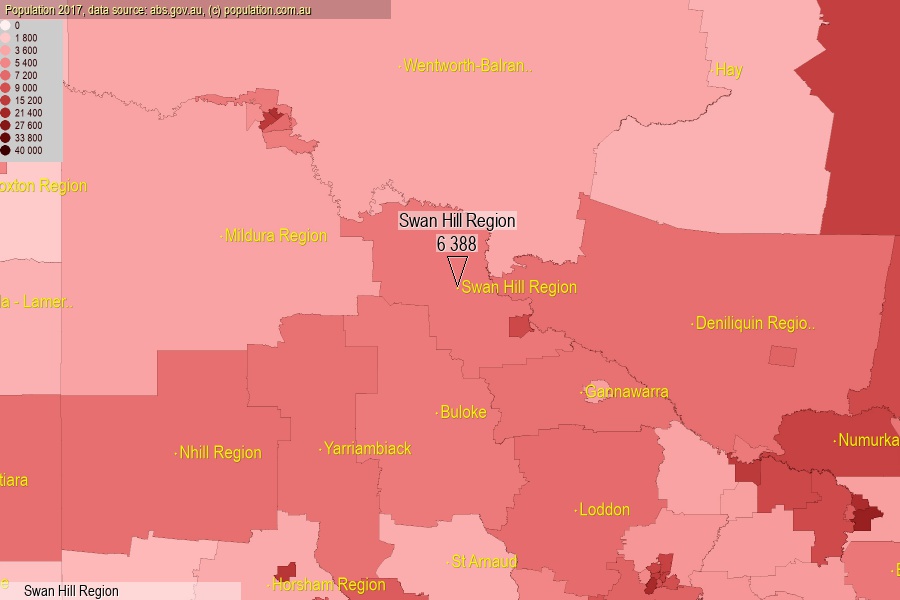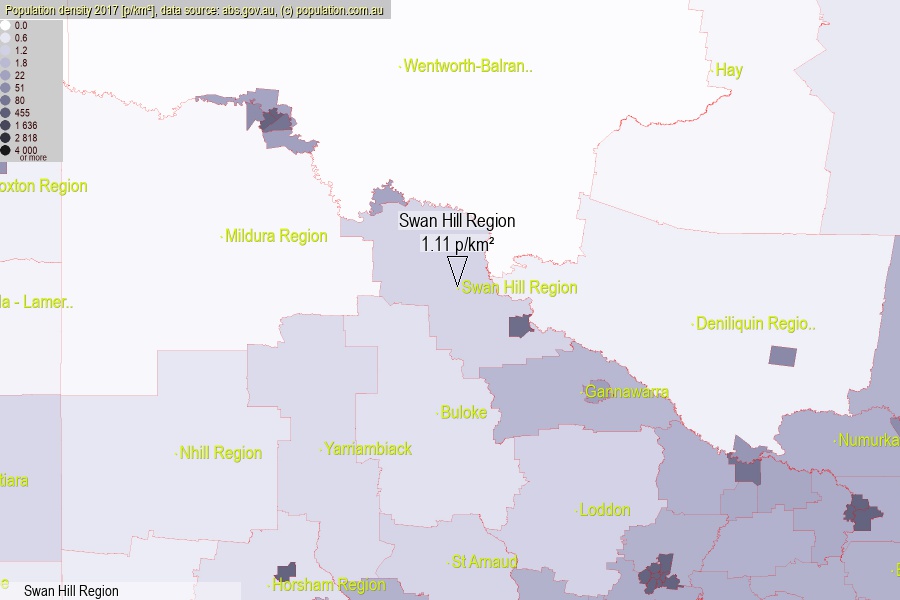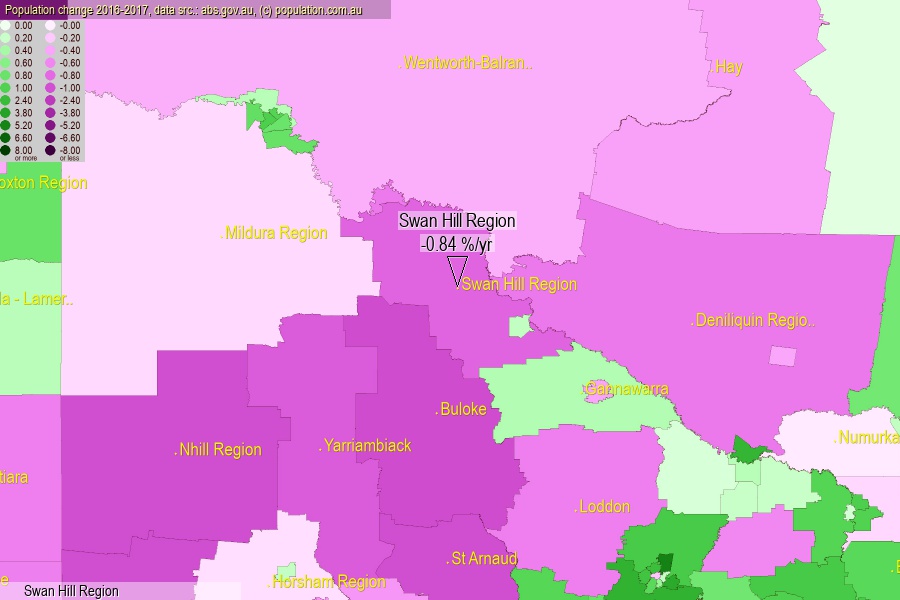 population.com.au
population.com.auLast official estimated population of Swan Hill Region (as Statistical Area Level 2) was 6 388 people (on 2017-06-30)[2]. This was 0.03% of total Australian population and 0.099% of VIC population. Area of Swan Hill Region is 5 759.20 km², in this year population density was 1.11 p/km² . If population growth rate would be same as in period 2016-2017 (-0.84%/yr), Swan Hill Region population in 2025 would be 5 972. [0]



Click to enlarge. Swan Hill Region is located in the center of the images.
Population [people], population density [p./km²] and population change [%/year] [2]
View borders » (new window) [4]
[1991-1992] +0.19 %/Yr.
[1992-1993] -0.46 %/Yr.
[1993-1994] -0.78 %/Yr.
[1994-1995] -0.76 %/Yr.
[1995-1996] -1.28 %/Yr.
[1996-1997] +0.44 %/Yr.
[1997-1998] -0.73 %/Yr.
[1998-1999] -0.51 %/Yr.
[1999-2000] -0.58 %/Yr.
[2000-2001] +0.48 %/Yr.
[2001-2002] -0.36 %/Yr.
[2002-2003] -0.42 %/Yr.
[2003-2004] -1.10 %/Yr.
[2004-2005] -0.46 %/Yr.
[2005-2006] -0.66 %/Yr.
[2006-2007] -0.90 %/Yr.
[2007-2008] -1.09 %/Yr.
[2008-2009] -0.68 %/Yr.
[2009-2010] -1.44 %/Yr.
[2010-2011] -1.55 %/Yr.
[2011-2012] -0.33 %/Yr.
[2012-2013] -0.72 %/Yr.
[2013-2014] -0.93 %/Yr.
[2014-2015] -0.80 %/Yr.
[2015-2016] -0.37 %/Yr.
[2016-2017] -0.84 %/Yr.
[0] Calculated with linear interpolation from officially estimated population
[1] Read more about SA2 and Australian Statistical Geography Standard (ASGS) on abs.gov.au
[2] Population data from Australian Bureau of Statistics (Population and density: 2017; change: 2016-2017)
[3] Digital Boundaries: Australian Statistical Geography Standard (ASGS) 2016.
[4] Border coordinates are simplifyed using Ramer-Douglas-Peucker algorithm.